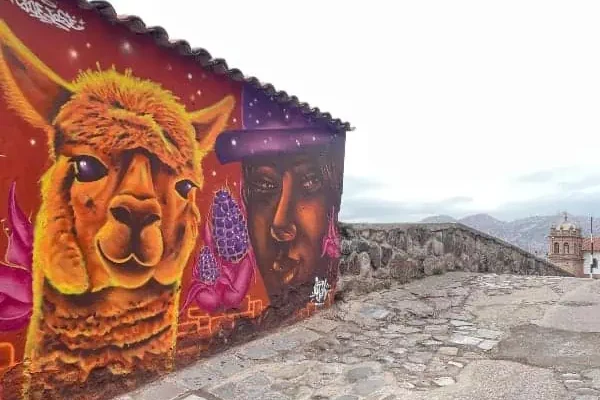Perhaps my Yukon upbringing prevented me from eating mangoes during my formative years. Especially in the grateful, sticky chin kind of way that I eat mangoes now. It’s a graceful gorging of sorts.
There could not be enough of the sweet stone fruit trucked North to satisfy my Mexican mango addiction. I’ve got it bad.
It’s been 10 months since I found myself living in Playa Del Carmen, a popular tourist destination located on the Caribbean coast of eastern Mexico. Playa (as it’s lovingly called by its locals and adopted travelers) is the third-largest city in the state of Quintana Roo, and while it has rapidly expanded to accommodate resorts and condominiums, it boasts treasures like renowned reef diving, holistic hotspots and closely located archaeological ruins like Chichén Itzá and Cobá.
Important things I’ve learned thus far: guacamole classifies as breakfast, lunch and dinner; mold grows on everything (including musical instruments, Birkenstocks and computers); bikes and snorkels are must-haves for land and sea exploration and, when in doubt, never eat street meat.
Truthfully, I never foresaw finishing grad school in art therapy and after skipping south for sunshine and oceanside living, but then again, I never saw myself writing an article on mangoes. Life is full of surprises.
Yes, avert your eyes and ears, mango naysayers, this article is dedicated to the aforementioned adaptable fruit, equally at home in a savoury, spicy concoction or as a sweet show stealer.
I’m talking about mango habanero, mango ice cream, mango macadamia cupcakes, mango maracuyá jam and mango salsa.
I have discovered the tropical cubed goddess; the mottled parrot that sings; paradise’s succulent and always available sweet. Whatever colourful market I find myself in, I can always find golden mangoes expertly stacked in pyramid fashion, from Ataulfos to Hadens to Kents to Heidis (depending on the season).
I have filled bicycle baskets, canvas grocery totes and back packs full of fresh, ripe mangoes. I happily transport them home, singing sunshine-fuelled praise for my favourite fruit. On days when I miss the mountains, I channel my gratitude for this Vitamin D rich lifestyle (yes I am getting enough D, thanks).
For now, ocean, sandy toes and mangoes top my gratitude list.
When I was young and growing up in Whitehorse, I remember when mangoes went on sale. It was a rare sight to see them coming home to our Golden Horn acreage, but when they did, my mom bought them by the boxful. When life gives you mangoes at one of the two largest grocery stores in northern Canada, you buy them by the box and suck, squeeze, chop, juice, cube and freeze.
It’s not hard to stand behind the mango. I am a staunch supporter of the Ataulfo in particular, whose vibrant yellow skin encloses a wonderfully preserved and fibreless meat. This variety holds up well for fruit bowls or cubed on skewers. Many locals traipse the hotel lined stretch of beaches south of touristy Avenida Quinta (Fifth Avenue) carting peeled mangoes on sticks and serving them with hot sauces like habanero or chipotle.
The Kent is a larger variety of mango; more round in appearance, its green colour marbles into a beautiful sunset yellow. It has a larger stone and is more fibrous than smaller mangoes. When overripe, it becomes juicy and drunkenly sweet, still perfectly suitable for a smoothie (just add water).
Mangoes in Mexico are at their best and most abundant from March to October, and during this season they can be as cheap as six pesos per kilogram (that’s 42 cents Canadian). It doesn’t take a lot of money to feel filthy rich with mangoes, here. Pesos on the other hand, can be a little harder to accumulate – ask any hard working local here. It is common for Mexicans to work six- to seven-day work weeks.
I figured this maniacal mango compulsion of mine could run unbridled and untamed for as long as I pleased. Or so I thought until this past week, when I found myself staring at an empty crate at my go-to organic market. The chalk marked sign said, ‘Mango/Heydi – $26/kilo’.
It was posted like a marker over an abandoned burial site.
I kicked aside my denial, swallowed my pride and asked the market attendant for a bunch of albahaca (basil), then pointed gravely at the slaughter site, my eyes pleading. No Spanglish was exchanged; his downcast dark eyes confirmed what I already knew to be true. There were indeed no more mangoes.
It’s the beginning of November. Hurricane season is upon us here on the coastline. I’m sitting in my villa missing all the simple joys of the Yukon fall turning to winter: snowpacks hardening enough to get out the skis; canning enough rhubarb strawberry jam to fill a small bomb shelter and finding merriment in the darkening days (aka cloistering in the Gold Rush with a thirsty crew of Yukon’s finest).
You really can’t take the mountains out of a northern girl, but in the meantime, mangoes (as hard sought as they might be) continue to be my alternative medicine.
Stay warm, friends.




